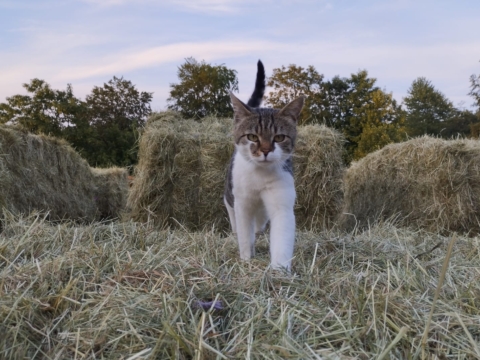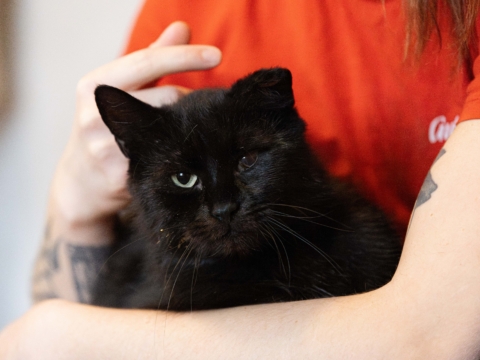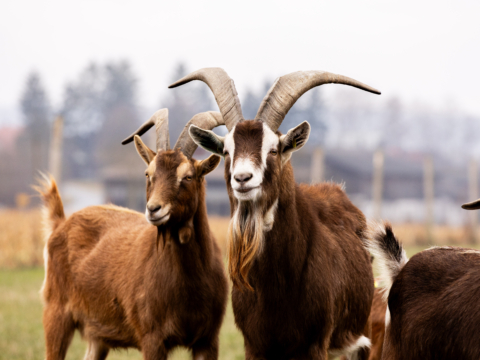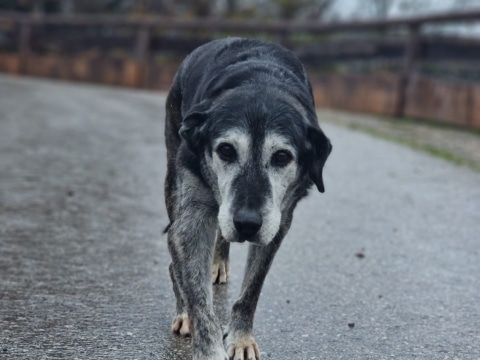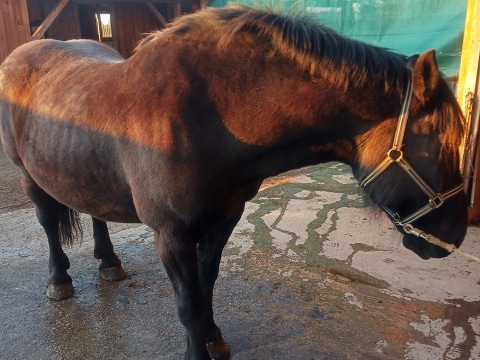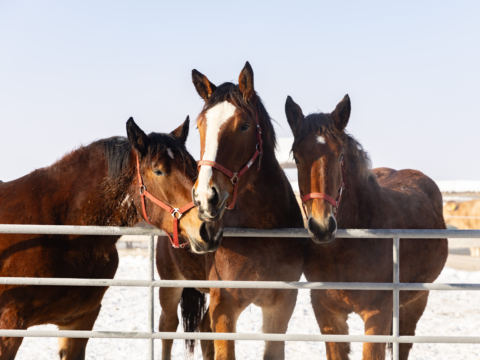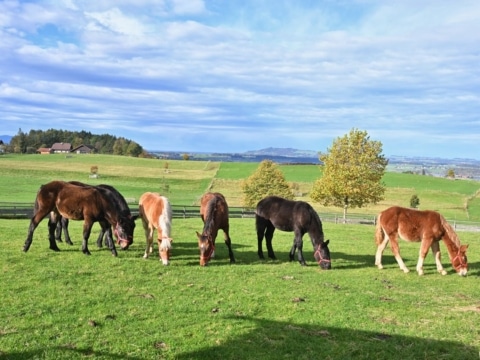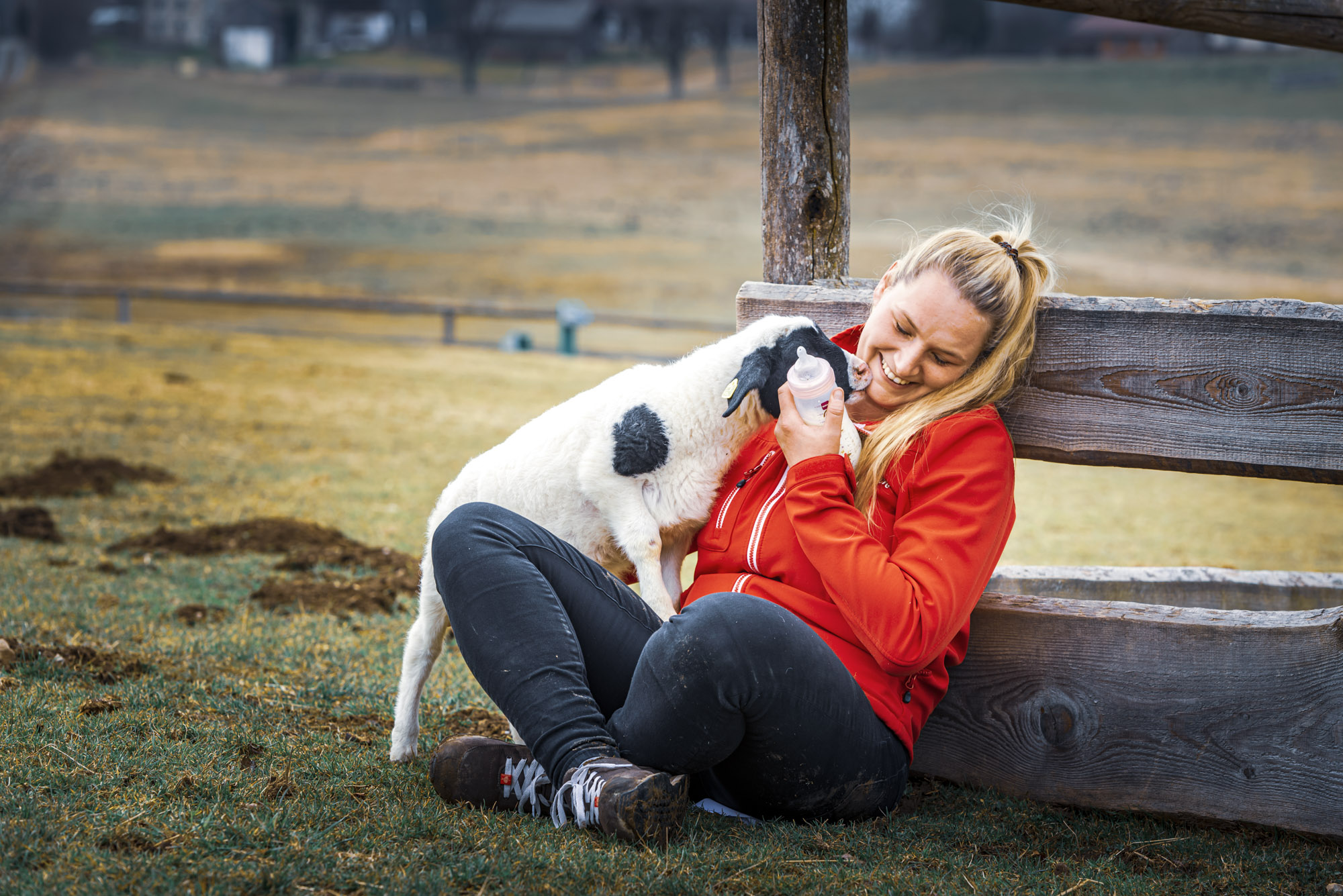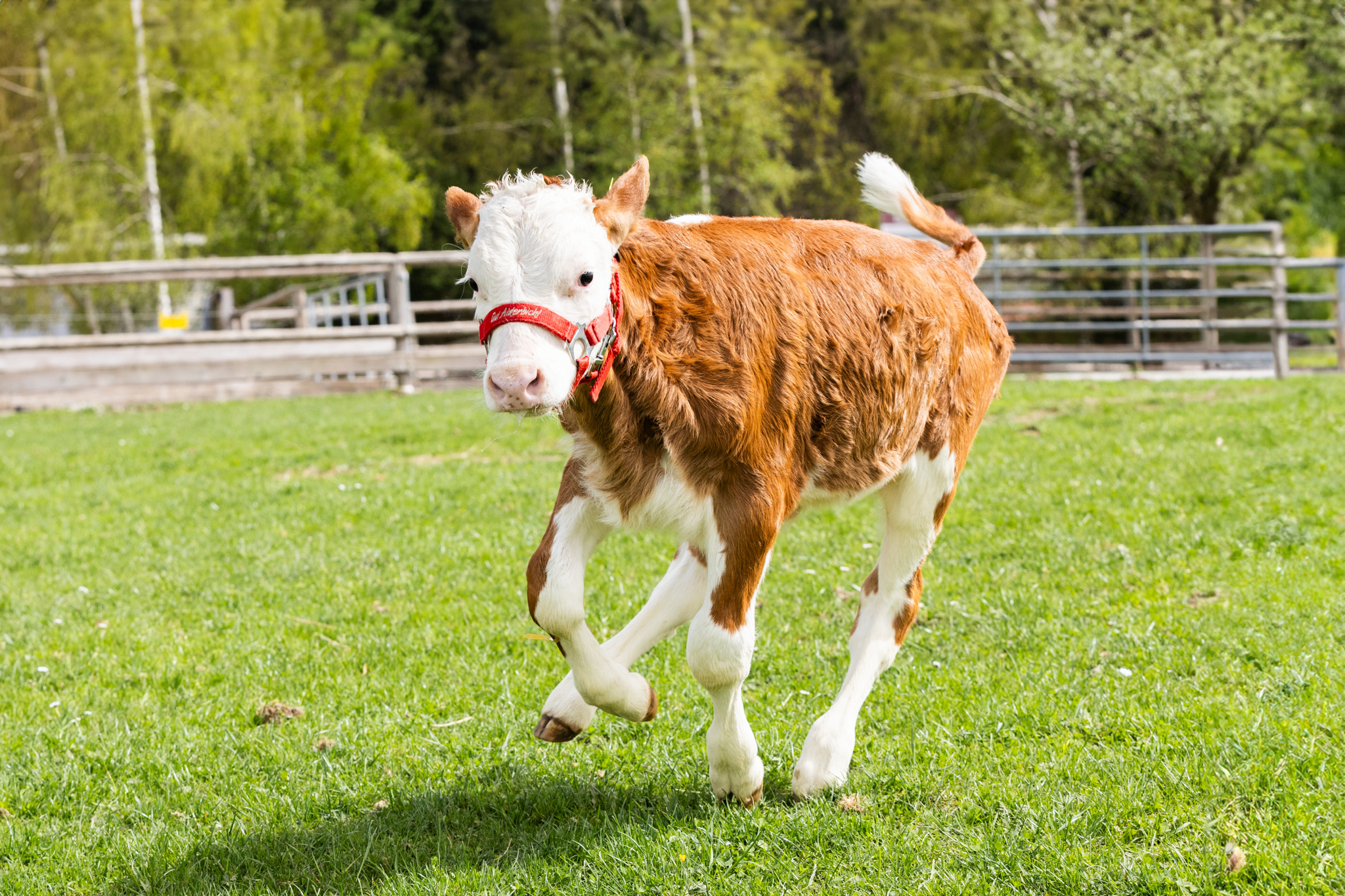
Garfield is a really "cool sock"
From the perspective of an Aiderbichler
(written by Gisela Pschenitschnig)
Garfield was born much too small and upside down. The calf had to be resuscitated, had swallowed amniotic fluid and immediately developed pneumonia.
Garfield wanted to fight and not give up – he did it.

How does the birth of a calf normally take place?
The birth of a calf is a natural process in which, if everything goes normally, the cow manages everything on her own. Around 80 per cent of all calves are born unassisted, so human intervention should only ever be limited to very specific situations.
But when is intervention necessary and when can the cows manage on their own? The birth of the calf begins when the head passes through the vulva and usually takes 5 to 15 minutes until the calf is fully delivered. Normally, calves are born in the so-called fore-end position (head first). Until the calf’s head is outside the dam, the calf is in most cases safely supplied with oxygen via the umbilical cord.
Garfield may have wanted it differently – he came the wrong way round. In this case, human help is needed. Garfield’s former owner is an Aiderbichler employee who certainly knew immediately what to do. Garfield was alive, and that was important.
Garfield will probably always be a “little man”
Garfield is small in stature, and Gut Aiderbichl has its own experiences with this handicap. One of his predecessors at Gut Aiderbichl Henndorf was Fipsi. When he was handed over to us by the farmer, we saw a bull calf that was too small, with big eyes and long eyelashes. Fipsi had a sickly heart and unfortunately did not live very long. But he enjoyed his life and was happy with his friend Pamplono, who also had some abnormalities. There was no fur, his head looked like that of a deer, his lower jaw was protruding and his bare skin was incredibly sensitive.


Handicaps are a natural enrichment
For humans, it is often inconceivable that an animal with a handicap should enjoy life. Day after day, the Aiderbichler animal carers see that a disability such as blindness, short stature, a limping leg, deafness or other differences are not a problem for an animal. It’s about survival – it’s an instinct that an animal will always fight for.
A handicap often means accepting the balance between a weakness and strengths. Garfield’s weakness is his size and we can’t really estimate how long he’ll stay alive, how his organs are developed, etc. But his strength is his will to survive and his zest for life, which he shares with the blind, also somewhat smaller, blind Darla. They will probably remain friends as long as they live.

The optimist is a person who sees the green light everywhere, while the pessimist only sees the red stoplight. But the truly wise person is colour-blind.
– Albert Schweitzer
Every life – whether human or animal – has the right to a second chance. Yours sincerely, Gisela
